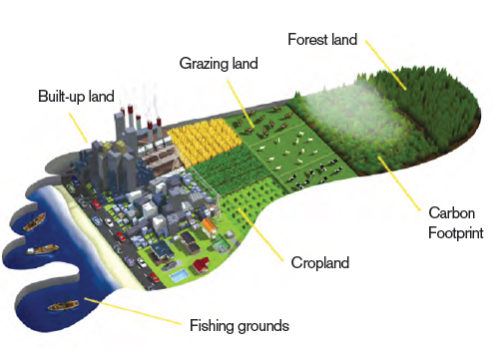Oakland – It is only August and humanity has already used a year’s worth of natural resources. According to the Global Footprint Network, August 13th 2015 was marked as “Earth Overshoot Day”, which is the date our consumption outgrows Earth’s natural resources.
“In less than eight months, humanity has used up nature’s budget for the entire year, with carbon sequestration making up more than half of the demand on nature, according to data from Global Footprint Network, an international sustainability think tank with offices in North America, Europe and Asia,” said the report.

Global Footprint Network, founded in 2003, measures humanity’s demand on the planet in comparison to nature’s ability to provide for the demand. The Earth Overshoot Day determines the date when humanity’s annual demand on natural resources exceed what Earth can provide in that year.
To determine the exact day, researchers calculate the number of productive biological across all around the globe. This areas absorb the damaging actions done by humans to the environment, such as the release of greenhouse gases into the atmosphere. The experts then estimated the amount of land that humanity would need to make up for the harmful actions. The result is Earth Overshoot Day which is the day when human demand exceed the planet’s ability to absorb it.

According to the study, humans would require 1.6 planet Earths to satisfy their 12 month demand.
“We look at all the resource demands of humanity that compete for space, like food, fiber, timber, et cetera, then we look at how much area is needed to provide those services and how much productive surface is available,” said Mathis Wackernagel, president of the Global Footprint Network.
The largest contributor to human ecological damage are carbon emissions. While they continue to grow, humanity will continue to destroy all the natural resources that absorb carbon. That is why, international effort to control climate change have focused on reducing carbon emissions. The team from Global Footprint Network said there was still hope in the form of a U.N. climate agreement that will be negotiated later this year. The agreement is expected to call for keeping warming within 3.6 degrees Fahrenheit over pre-Industrial Revolution levels, something the group says would require nations to completely phase out fossil fuels by 2070.
Other great solution, the group said, would be to make agricultural technology more efficient and encourage the growth of renewables such as solar and wind. For example, Denmark has cut its emissions 33% in the past twenty years. The team explained it was possible that countries could make double-digit reductions in their emissions by 2030 per the recommendations of the U.N.’s Intergovernmental Panel on Climate Change.
You can navigate Earth Overshoot Day 2015 campaign here.
Source: Global Footprint Network

We have enough coal and oil at present rate of use to last 300+ years. There remains more water under the earth’s crust than is above it. According to satlelite data there has been no consistant temperature change in any direction for the past 30 years. The oceans are warmer at present due to under water thermo fissures. Earth’s temperature has always fluxuated because of sun activity. Hence the periodic ice ages, increased storms and drouths. Ofcourse we need to protect our planet. But also we need learn to use the available resources in a responsible manner and not refuse to use them hoping to replace them with yet unavailable technology. In doing so we are adding a much unnecessary burden on the world’s population. Especially low income people. Higher utilities will affect us all but they once again will bear the brunt of of unwise decisions and poor stewardship.
The largest contributor to human ecological damage is NOT carbon emissions. Carbon emissions, denuding the seas, fresh water shortages, loss of crop land and all of the other excessive demands for resources are caused by OVERPOPULATION. What good does it do to try and reduce carbon emissions if at the same time the world population increases hugely. If you reduce emission by an almost impossible 15% and at the same time gan 25% more people you are in a net loss.
And of all the developed countries, only America is increasing its population. I have written this comment many, many times and no-one seems to pick up on such simple facts.
Time to make some changes: Tax advantages should go to small families, not large; aid should go to countries that work to red populations; teachers should be required to teach that small families are friends of the earth. MOST OF ALL, time to tell the religious cave men of the world that God did not order us to breed to extinction. They always say “God will provide.” And He has. he has given us the brain to ave ourselves.
Tell the dumb humans to STOP BREEDING.
Let’s go with it. It is grossly stupid not to! Climate is evident whether you observe it as a change, a warming, a difference or simply as something you are not periodically accustomed to. IT”S AS CHANGE & LETS DO something about it! No more Colorado, West Virginia COAL to China AND/OR India. Or any of the desperate countries of the world. Suck up the loss of jobs and INCOME for the local coal miner employees and owners and create a Gov. deal that the workers are compensated. The owners have already reaped massive bucks . So fuck ’em!